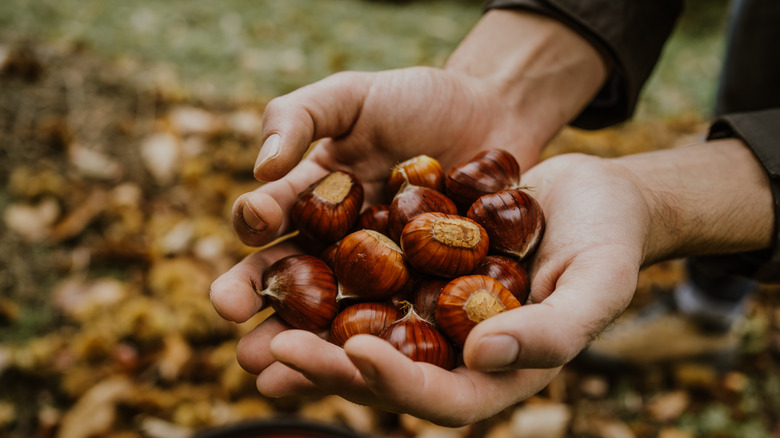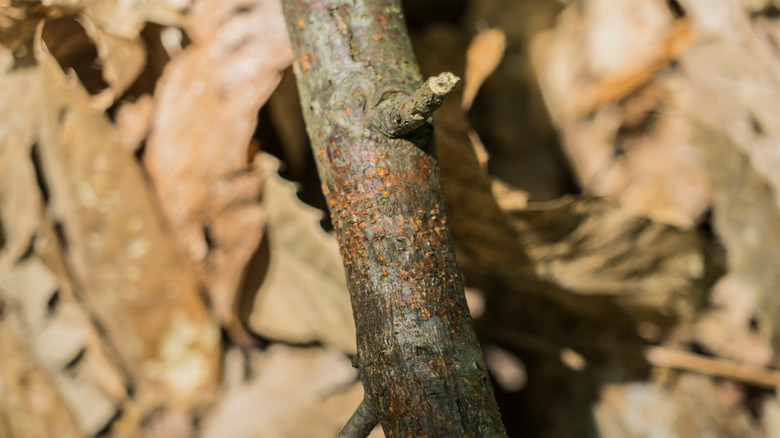The Reason We Don't Roast Chestnuts As Much During The Holidays
Few phrases are more synonymous with Christmas than "chestnuts roasting on an open fire," the opening line of "The Christmas Song" by Nat King Cole. But how many of us can say that we've actually eaten roasted chestnuts ourselves? These holiday treats have become a rarity in modern times, but if we cast ourselves into the past, they would be almost impossible to avoid. In the 18th and 19th centuries, American Chestnut trees could be found all along the Eastern seaboard and as far west as Kentucky, according to USA Today, accounted for nearly half of the trees in East Coast forests.
The American Chestnut is a majestic giant, reaching heights over 100 feet with trunks more than 10 feet wide. In addition to being a popular food source, The American Chestnut Foundation notes that the trees had strong, rot-resistant wood that was used to build everything from log cabins to telephone poles. That has all been left in the past. Most Americans alive today will never have seen one of these trees, let alone built a house from them. The American Chestnut has all but vanished from the face of the Earth, and its downward spiral began, of all places, at the Bronx Zoo.
The American Chestnut almost went extinct
In 1904, a gardener at the Bronx Zoo saw something strange on a chestnut tree. Orange spots had appeared on the bark, and soon after, the tree died. According to NPR, this was the first observed instance of chestnut blight, a fungal pathogen that was ultimately traced to imports of Asian Chestnut trees from Japan. The blight creates a ring of lesions around the tree's trunk, preventing nutrients from reaching the branches. While the Asian trees were resistant to it, the American variety was highly vulnerable. By 1950, approximately four billion American Chestnut trees had died. The blight does not affect the tree's roots, so you can still find small saplings throughout the East Coast, but the fungus kills them before they can grow to bear fruit.
Chestnuts are still available to cook with, but USA Today explains that these are mostly imported from China, Korea, and Italy, and they just aren't the same as American Chestnuts. The Atlantic notes that American Chestnuts are unique because they are smaller than other varieties. This gives them a greater surface area to volume ratio, which in turn allows them to convert their natural starch into sugar at a faster rate. This makes them sweeter and more intensely flavored than the Asian and European variants. Fortunately, The American Chestnut Foundation has developed hybrids of American and Asian Chestnut trees to create a flavorful but blight-resistant nut. Slowly but surely, they are making a comeback.

